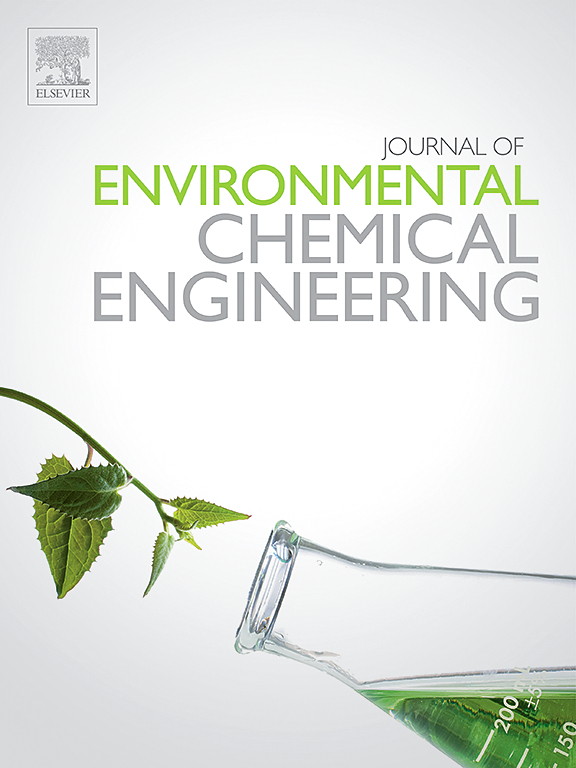One-step green synthesis of silica microcapsules with high pesticide loading for sustained-release
IF 7.4
2区 工程技术
Q1 ENGINEERING, CHEMICAL
引用次数: 0
Abstract
Pesticides are vital for agricultural productivity but their excessive use has raised serious environmental concerns, including soil and water contamination. Traditional pesticide formulations often face issues of rapid degradation, leading to repeated applications and resource waste. Controlled-release systems, particularly microencapsulation, have been proposed as solutions to address these issues, offering the potential to enhance pesticide efficiency and minimize environmental risks. However, traditional methods usually rely on toxic solvents or post-loading processes, which pose significant ecological risks and elevates manufacturing costs. This study presents a one-step green synthesis method to produce silica microcapsules loaded with the pesticide pirimiphos-methyl (PM), a widely used organophosphorus pesticide, without the need for toxic solvents. The synthesis uses tetraethyl orthosilicate (TEOS) and PM as the oil phase, and utilizes surfactants and NaF in an oil/water (O/W) emulsion system. The process is catalyzed by hydrochloric acid to form a silica shell that encapsulates the pesticide in situ. The effects of NaF and the core-to-wall ratio on the morphology, pesticide loading, encapsulation efficiency, thermal stability, and controlled release of the microcapsules were evaluated. The results demonstrate that the microcapsules exhibit high pesticide loading (62.18 %), excellent encapsulation efficiency (up to 92.17 %), and improved thermal stability, with sustained pesticide release over 16 d. This green synthesis method represents a significant advancement in pesticide delivery systems, offering a scalable, eco-friendly solution for sustainable agriculture with reduced environmental and health risks.
高载药缓释二氧化硅微胶囊的一步绿色合成
农药对农业生产力至关重要,但它们的过度使用引发了严重的环境问题,包括土壤和水污染。传统的农药配方往往面临快速降解的问题,导致重复使用和资源浪费。控释系统,特别是微胶囊,已被提出作为解决这些问题的解决方案,提供了提高农药效率和减少环境风险的潜力。然而,传统的方法通常依赖于有毒溶剂或后加载过程,这带来了巨大的生态风险,并提高了制造成本。本研究提出了一种不需要有毒溶剂的一步绿色合成方法,制备了二氧化硅微胶囊,该微胶囊负载了广泛使用的有机磷农药-甲基吡咪磷(PM)。该合成以正硅酸四乙酯(TEOS)和PM为油相,在油/水(O/W)乳液体系中使用表面活性剂和NaF。该过程由盐酸催化形成一个硅壳,将农药包裹在原位。考察了NaF和芯壁比对微胶囊形态、载药量、包封效率、热稳定性和控释性能的影响。结果表明,该微胶囊具有较高的农药负荷(62.18 %)、优异的包埋效率(高达92.17 %)和较好的热稳定性,且可在16 d内持续释放农药。这种绿色合成方法代表了农药释放系统的重大进步,为可持续农业提供了可扩展的、环保的解决方案,同时降低了环境和健康风险。
本文章由计算机程序翻译,如有差异,请以英文原文为准。
求助全文
约1分钟内获得全文
求助全文
来源期刊

Journal of Environmental Chemical Engineering
Environmental Science-Pollution
CiteScore
11.40
自引率
6.50%
发文量
2017
审稿时长
27 days
期刊介绍:
The Journal of Environmental Chemical Engineering (JECE) serves as a platform for the dissemination of original and innovative research focusing on the advancement of environmentally-friendly, sustainable technologies. JECE emphasizes the transition towards a carbon-neutral circular economy and a self-sufficient bio-based economy. Topics covered include soil, water, wastewater, and air decontamination; pollution monitoring, prevention, and control; advanced analytics, sensors, impact and risk assessment methodologies in environmental chemical engineering; resource recovery (water, nutrients, materials, energy); industrial ecology; valorization of waste streams; waste management (including e-waste); climate-water-energy-food nexus; novel materials for environmental, chemical, and energy applications; sustainability and environmental safety; water digitalization, water data science, and machine learning; process integration and intensification; recent developments in green chemistry for synthesis, catalysis, and energy; and original research on contaminants of emerging concern, persistent chemicals, and priority substances, including microplastics, nanoplastics, nanomaterials, micropollutants, antimicrobial resistance genes, and emerging pathogens (viruses, bacteria, parasites) of environmental significance.
 求助内容:
求助内容: 应助结果提醒方式:
应助结果提醒方式:


